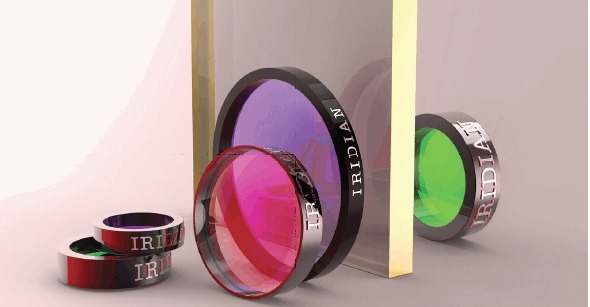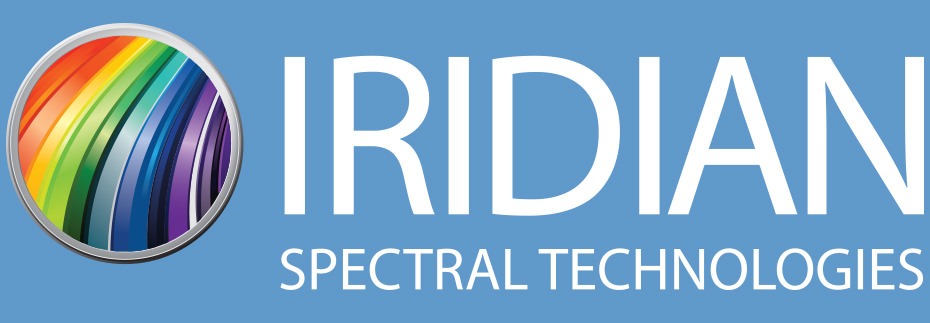
The Right Filter Is Key to Lower-Cost and Faster Time-to-Market MWIR Equipment
Utilization of mid-wavelength, also called midwave, infrared (MWIR) light is critical in many areas, including thermal monitoring of equipment and homes; gas absorption; military enhanced-vision systems for imaging vehicles, people, and terrain; and environmental monitoring of gases. Even diagnosis of pregnancy in dairy cows, among other applications, can productively use infrared in the MWIR range.
As in any type of infrared (IR) optical system, optical filters are critical to MWIR hardware success. They enable the transmission of desired wavelengths and blockage of others. However, engineers and designers sometimes provide more stringent filter specifications than necessary and forget to consider what needs other parts of a design might already fulfill. As a result, designs become more difficult to implement, take longer to bring to market, and involve unnecessarily greater expense.
By obtaining informed advice at the outset and making some easily accommodated changes to the design process, companies can save time and money while achieving their goals.
MWIR Filters
MWIR filters are optical devices that operate in the MWIR range, which extends from 3 to 6 microns. The filters comprise substrates with multilayer thin film structures that transmit desired IR wavelengths while blocking others. MWIR filters are typically bandpass or edge pass filters whose wavelength selectivity improves the signal-to-noise ratio for the detectors in an MWIR imaging or detection system.
A filter enables an application to receive the wavelengths it needs to correctly operate. There are a number of critical characteristics that affect the filter’s ability to provide what the application needs. The characteristics include surface quality, transmitted and blocked wavelength ranges, the total amount of IR energy the filter passes, and the ability to retain such characteristics in the application’s operating environment. To tightly control filter characteristics, manufacturers must correctly match filter construction to the specifications of the application design.
Surface quality
Surface quality and the question of surface defects affect image quality. Sometimes the impact of surface defects is less important, such as when the application only needs to measure the amount of MWIR light present. Sometimes the impact is more important. In an imaging application that converts MWIR into an image visible to the human eye, defects might matter more because the quality of the image itself is critical.
However, designers often, out of habit or assumption, apply surface-quality specifications that are more stringent than necessary. MWIR wavelengths are much longer than those in the visible light spectrum. Effectively, defects that might be visible to the naked eye in ambient lighting would be invisible under MWIR light, where the wavelengths are too long to resolve the defects. Even when the application involves imaging, surface quality is often “over specified”. When filter surface quality is over-specified, yields can drop significantly, driving up the cost of the final filters.
Transmission characteristics
The sets of wavelengths the filter transmits and blocks are at the heart of its intended function. Depending on the application design, bandpass filters might be needed to transmit a band of contiguous wavelengths within the MWIR range. Other applications could require longwave (transmitting light above a specified wavelength) or shortwave (transmitting light below a specified wavelength) filtering.
However, as the wavelength range narrows, the amount of transmitted light drops. Manufacturers frequently must balance the specific wavelength transmission bands of the filter with the total amount of IR energy that will travel through the filter to satisfy a given design. A sensor, for example, needs to receive a certain amount of energy to react. If the filter cannot transmit enough IR energy to meet the specifications of the sensor, the design will not work. Restricting the breadth of the transmission band, while providing more wavelength selectivity, also reduces the total potential light that can pass through. So, it can sometimes compromise the functionality of
the detector.
Environmental factors
Filters must also work within the application environment. A coating that is stable at temperatures or humidity levels in a manufacturing facility might not react correctly in the conditions of actual use.
Filter construction
The choice of production method to coat filters has a major influence on the ability to control a filter. The most common approach for coating MWIR filters is evaporation. In this process, the coating material is heated to a vapor state and then allowed to condense on the substrate. Another approach, which Iridian employs, is energetic sputtering. Although this technology is common in other wavelength ranges such as within the visible or near-infrared (NIR), it has been used less to address needs in the MWIR range due to the necessity to use coating materials that transmit in the MWIR. Sputtering offers some strong advantages over evaporation. The resultant filters are environmentally robust, and manufacturers can apply high degrees of control over final
spectral characteristics.
Common filter issues
Beyond trade-off in performance characteristics, design choices can have unintended consequences. Although MWIR filters are common in multiple industries, even experienced designers can create unnecessary manufacturing challenges with their designs and filter specifications.
At a high level, designers may think more like scientists than engineers. They consider what would be perfect in theory and forget that real-world conditions might be tolerant of less-than-perfect choices. The result can be overly tight specifications and unnecessary costs.
For example, designers often ask for a tight defect specification on the filter surface. If an application involves sensing and not full imaging, the surface quality specification may be unwarranted if enough IR light can still fall on the detector and the signal-to-noise ratio is not compromised. The right design depends on the application. In an imaging system for military use, where someone will have to discern and react to objects on a display, the integrity of the image may be more important. In many other applications, such as MWIR gas sensing, it may not matter.
Another way lack of communication at the design stage can create issues is through the assumption that cutting a large filter into multiple smaller filters is less expensive than requesting filters of the correct size. This can result in undue requirements for uniform performance on a large part and can be a substantial cost driver. While correctly sizing filters for the device design during the manufacturing process can add processing costs, it still can be substantially less than the costs associated with yielding fully compliant larger parts. Even with custom processing, the total cost can be significantly lower.
Other aspects of the system hardware can have implications for filter design and requirements. An IR detector has a specific range over which it operates. Light that falls outside that range will not register on the detector. Such limitations often become a positive feature in the filter design.
If, for example, the detector will not respond to wavelengths below 2 microns, it is a waste of money to engineer the filter so it blocks anything between 1 and 2 microns.
Considering the filter early in the design process can result in redesigned optical path layouts that can greatly influence the complexity, cost, and achievable performance of the filter. Modifying the size and placement of the filter within the optical path, and in some cases reengineering the placement of detectors and thus the beam path, can affect the entire industrial design and also how the device operates. A shift in detection techniques can sometimes result in a more effective final product.
Understanding the actual needs and designing filter solutions that balance both technical and commercial requirements can head off issues that can arise in filter manufacturing. The manufacturing process can positively or negatively affect the difficulty of filling design specifications and also have a large impact on the turnaround time on custom designs. Iridian has a typical turnaround time from order to delivered product of six to eight weeks. Filter manufacturers that do not work closely with system designers and fail to consider complexities of manufacturing can encounter unexpected delays in completing a successful filter build. The result can delay an entire project, in some cases by many months, increasing time to market.
Filter design solutions
Small changes or additions to the design process can help eliminate many of these issues.
Designers should consider filter requirements as early in the design process as possible. The hardware should not be an amalgam of black boxes that operate independently. Use a systems-engineering approach to consider how the interactions of separate elements affect the entire project. There may be advantages to gain, like using a detector’s specifications to help limit the wavelengths the filter
must block.
Next, consider alternative application designs. A modification of layout, a different detector, or another change can improve performance and lower costs.
Most importantly, look at a filter vendor as a collaborator and partner. Start consultations at the onset of the design process. Experts in filter design and manufacture can raise important questions based on past experience and knowledge of what filters can and cannot do. It is better to head off issues before they arise, thus saving time and money.
Any design will still have its own challenges. But elimination of the unnecessary ones frees resources to focus on those that remain.


